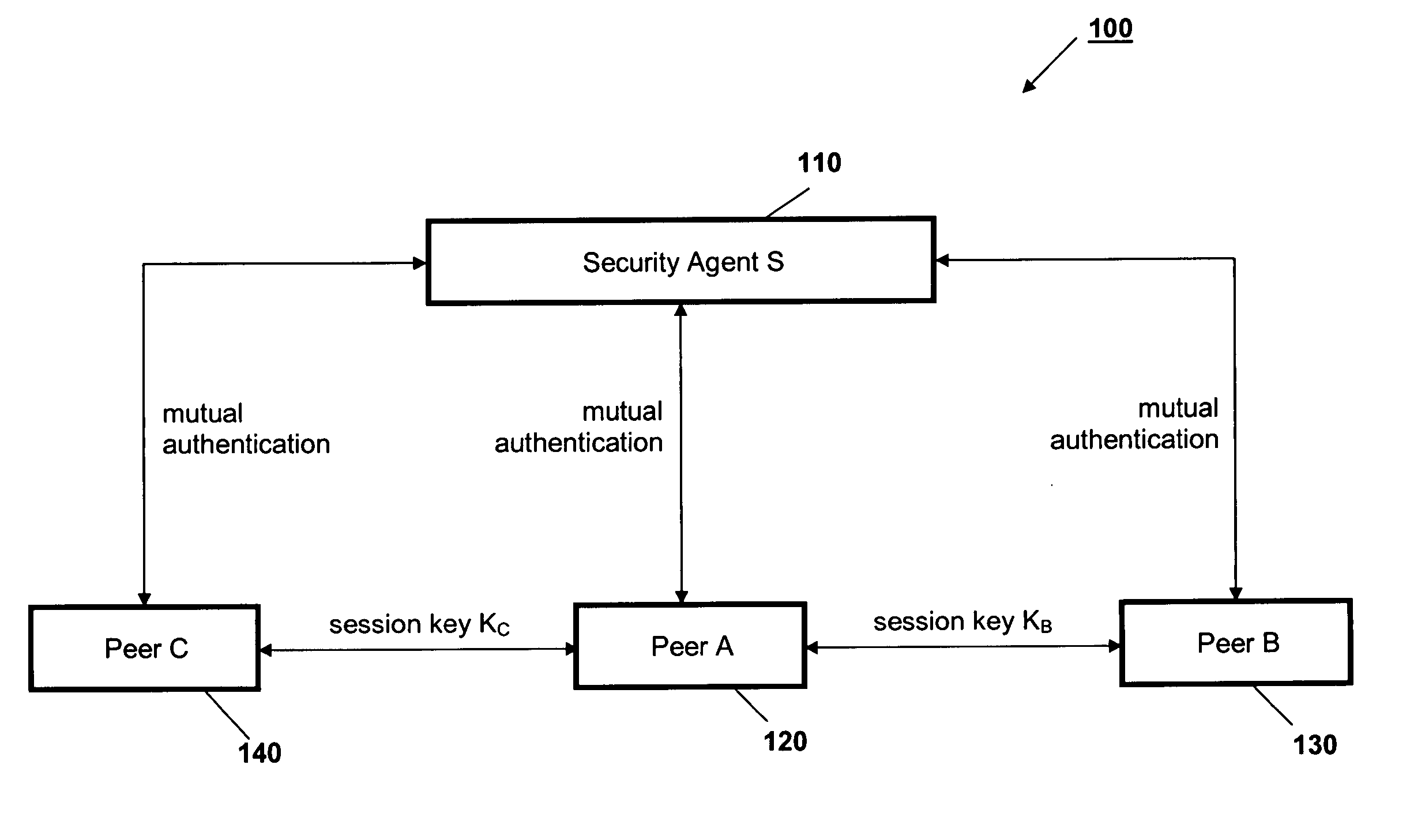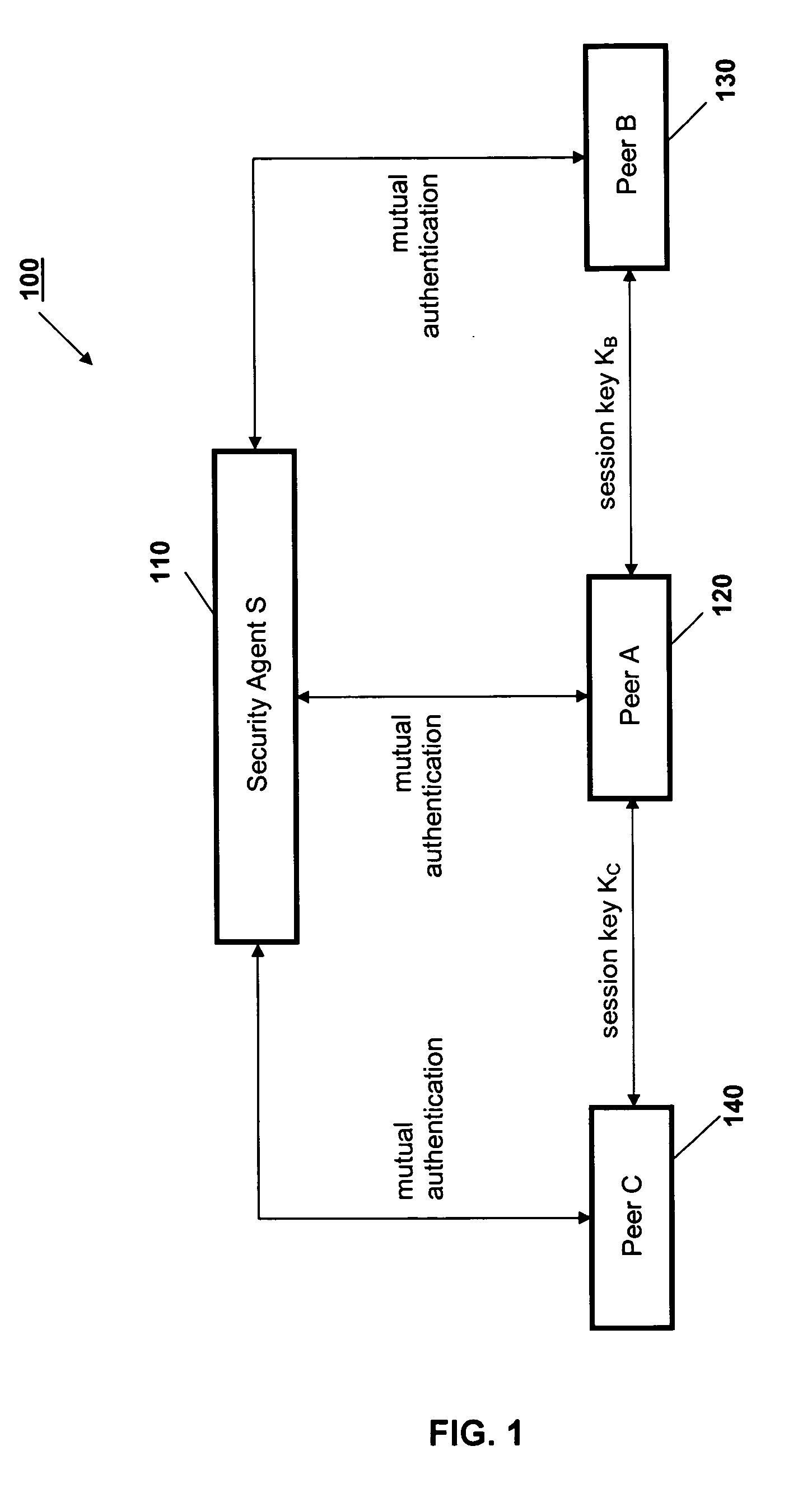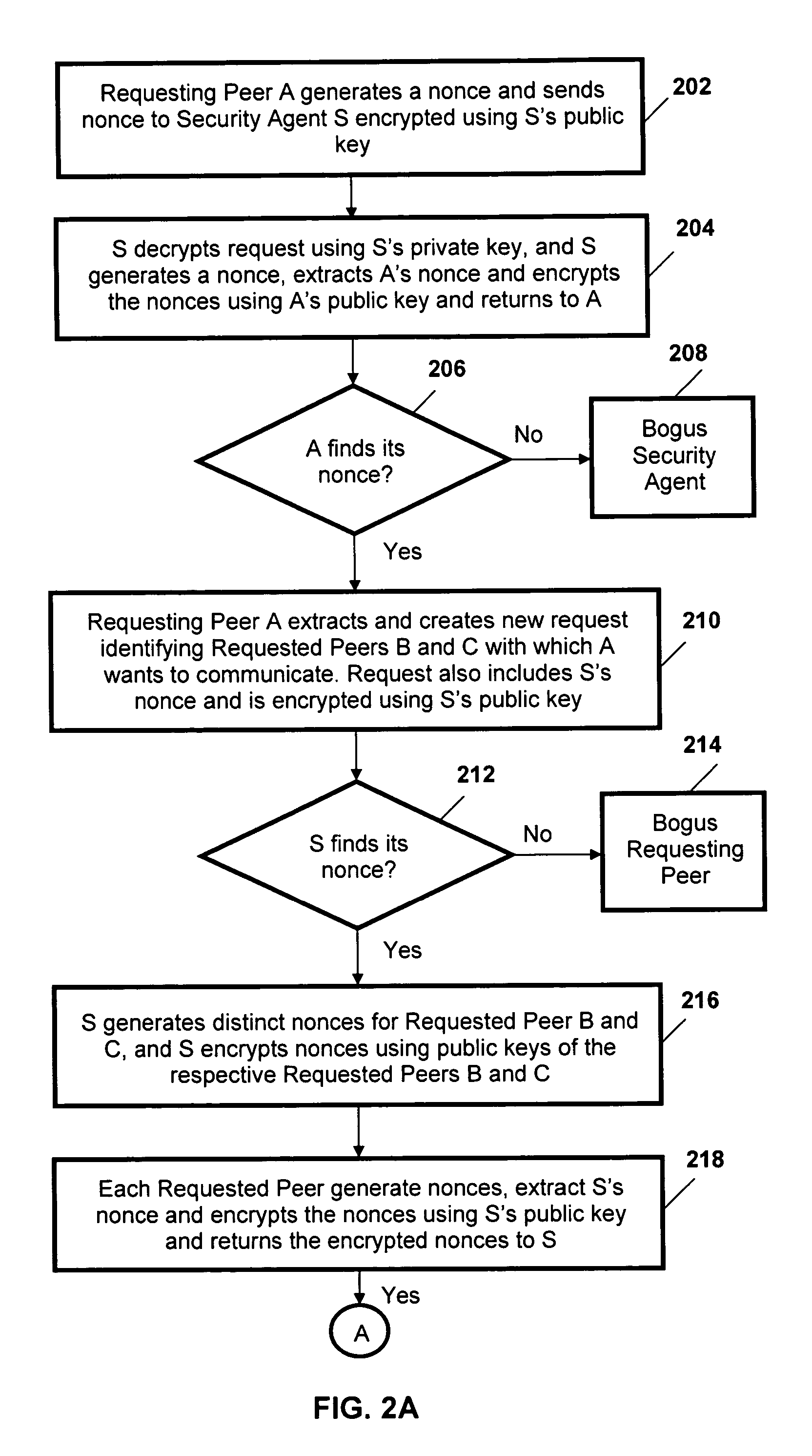Peer-to-peer communications
- Summary
- Abstract
- Description
- Claims
- Application Information
AI Technical Summary
Benefits of technology
Problems solved by technology
Method used
Image
Examples
Embodiment Construction
[0014]FIG. 1 schematically represents entities involved in a peer-to-peer network 100, according to the protocol described herein. A Security Agent S 110 has communications links with Peer A 120, Peer B 130, and Peer C 140. The network 100 may include further peers, though three peers are sufficient to illustrate operation of the described security protocol.
[0015] The Security Agent S 110 is mutually authenticated with each of the Peers 120, 130, 140 during initial communication between the requesting Peer 120 and the Requested Peers 130 and 140.
Entities, Assumptions and Notation
[0016] Consider the following entities that are used in describing an arrangement for peer-to-peer communications.
Peer A 120A client wanting to use the resources or servicesof Requested Peers B 130 and C 140.Peer B 130 and C 140Requested Peers B 130 and C 140 with whichRequesting Peer A 120 communicates.Security Agent S 110An agent, cluster of “thick” clients or serversthat facilitates secure communica...
PUM
 Login to View More
Login to View More Abstract
Description
Claims
Application Information
 Login to View More
Login to View More - R&D
- Intellectual Property
- Life Sciences
- Materials
- Tech Scout
- Unparalleled Data Quality
- Higher Quality Content
- 60% Fewer Hallucinations
Browse by: Latest US Patents, China's latest patents, Technical Efficacy Thesaurus, Application Domain, Technology Topic, Popular Technical Reports.
© 2025 PatSnap. All rights reserved.Legal|Privacy policy|Modern Slavery Act Transparency Statement|Sitemap|About US| Contact US: help@patsnap.com



